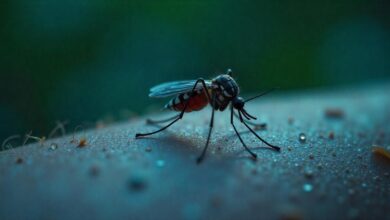What Dinosaur has 500 Teeth? Exploring the Remarkable Adaptations of This Ancient Giant

What dinosaur has 500 teeth: Dinosaurs are known for their fascinating and diverse features, and one of the most intriguing aspects of their anatomy is their teeth. From sharp teeth used for tearing meat to flat teeth for grinding plants, the variety of teeth in dinosaurs tells us a lot about their diet and survival strategies. But among the many dinosaur species, there’s one that stands out for having a particularly impressive set of teeth—Nigersaurus. But how many teeth did this dinosaur have, and why is it so unique? Let’s explore the mystery behind the question: What dinosaur has 500 teeth?
What Dinosaur Has 500 Teeth?
The answer to the question What dinosaur has 500 teeth? is Nigersaurus, a plant-eating dinosaur that lived about 110 million years ago during the Cretaceous period. Nigersaurus is one of the most interesting dinosaurs in terms of its teeth. It was discovered in the Sahara Desert in Africa, and paleontologists were amazed to find that it had an extraordinary 500 teeth. This high tooth count makes Nigersaurus a unique species, and understanding why it had so many teeth helps us understand its survival strategy.
Nigersaurus: A Plant-Eating Dinosaur
Nigersaurus was a herbivore, meaning it primarily ate plants. Its teeth were perfectly suited for its diet. Unlike many other dinosaurs, Nigersaurus had a wide, shovel-shaped mouth with teeth arranged in a way that allowed it to graze efficiently on low-lying plants. These teeth were specialized for stripping and slicing through vegetation, particularly plants that were soft and fibrous. Its teeth grew in rows, and as older teeth wore down, new ones would emerge in their place, ensuring it always had sharp teeth for feeding.
How Many Teeth Did Other Dinosaurs Have?
While Nigersaurus had an impressive 500 teeth, not all dinosaurs had such a high tooth count. Carnivorous dinosaurs like Tyrannosaurus rex typically had fewer teeth, but they were large, sharp, and designed for tearing meat. On the other hand, herbivorous dinosaurs like Triceratops had more teeth, but they were more spaced out and used for grinding tough plant matter. Nigersaurus’ 500 teeth were unique in both number and arrangement, making it one of the most distinctive plant-eating dinosaurs.
What Made Nigersaurus’ Teeth Unique?
What really sets Nigersaurus apart is the sheer number and the specialized design of its teeth. Unlike most dinosaurs, Nigersaurus had teeth that were relatively small but grew in dense, overlapping rows. This arrangement allowed the dinosaur to effectively “strip” plants. The teeth were also positioned in a way that made them ideal for feeding on the soft vegetation that grew low to the ground. The continuous growth of its teeth meant that it could maintain its ability to feed throughout its life.
Teeth and Dinosaur Survival
Teeth played a crucial role in the survival of dinosaurs. For Nigersaurus, its teeth helped it stay fed in an environment that was rich in plants. By having so many teeth, Nigersaurus could continuously replace and use them for grazing. This tooth structure was vital for its survival, as it allowed the dinosaur to efficiently feed on the abundant vegetation of its habitat. Other dinosaurs, especially carnivores, relied on their teeth for hunting and defense, while herbivores like Nigersaurus needed specialized teeth for eating plants.
The Evolution of Nigersaurus’ Teeth
The development of Nigersaurus’ teeth was likely driven by evolutionary pressures. As a herbivore, Nigersaurus needed teeth that could handle a large amount of plant material. Over time, natural selection favored dinosaurs with teeth that could effectively strip and slice vegetation. Nigersaurus’ unique arrangement of teeth, with new ones constantly growing to replace older ones, ensured it could adapt to its environment and thrive in its ecosystem.
What Dinosaur Has 500 Teeth? The Mystery Explained
The discovery of Nigersaurus and its 500 teeth is one of the most fascinating finds in paleontology. Paleontologists have studied the fossilized remains of Nigersaurus and found that its teeth were not only numerous but also remarkably specialized. This discovery sheds light on the diverse ways dinosaurs adapted to their environments and how certain species evolved to become so unique. The question of what dinosaur has 500 teeth? highlights just how incredible nature’s adaptations can be, and Nigersaurus is a perfect example of this.
Comparing Nigersaurus to Other Herbivores
While Nigersaurus had 500 teeth, it wasn’t the only herbivorous dinosaur with many teeth. Other herbivores, such as the long-necked Brachiosaurus, also had numerous teeth, though not in the same configuration. Nigersaurus’ teeth were specifically adapted for eating soft plants, while other herbivores had teeth suited for grinding tough vegetation. The unique features of Nigersaurus’ teeth show how different herbivorous dinosaurs developed specialized adaptations based on their diet and environment.
Conclusion: Why 500 Teeth?
In conclusion, the mystery of what dinosaur has 500 teeth? is answered by Nigersaurus, a plant-eating dinosaur that thrived with its unique set of teeth. Its 500 teeth were not just a random feature; they were a vital adaptation that allowed it to feed efficiently on low-lying plants. The discovery of Nigersaurus and its specialized teeth provides valuable insight into how dinosaurs evolved and adapted to their environments. The question of “why 500 teeth?” is no longer a mystery, but an exciting chapter in our understanding of these prehistoric creatures.





One Comment